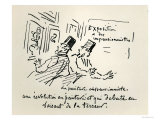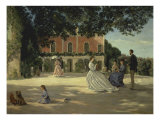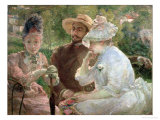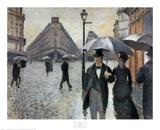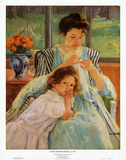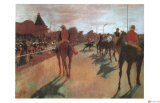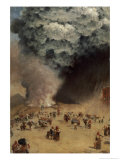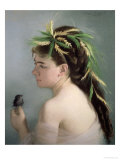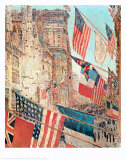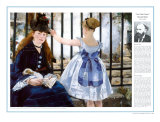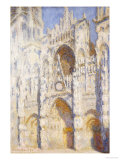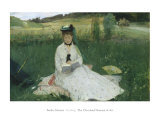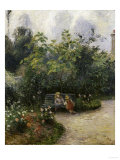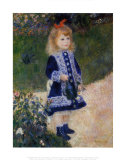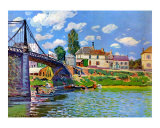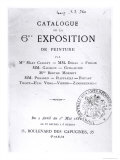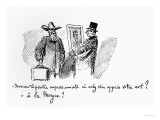|
|
|
|
|
|
|
|
|
|
|
|
BOOKS ABOUT IMPRESSIONISM & IMPRESSIONISTS
|
|
|
|
|
|
|
|
|
|
|
|
|
|
art supplies online
|
  |
|
|
|
|
|
|
|
|
|
 |
|
|
|
The Impressionists Art History Posters
|
art > Early Impressionists > THE IMPRESSIONISTS < Post Impressionists < art education resource links < social studies
|
|
The term “Impressionism” was coined to describe the work of painters who strove to capture the changing qualities of light in time using visible brushstrokes of light and pure hues, letting the viewer's eye mix the colors.
The artists who became known as the Impressionists broke the traditional rule of the French Académie des beaux-arts (Academy of Fine Arts) when they emphasized day-to-day existence rather than the structured religious, historic and allegorical subjects.
The Impressionist chose to paint outdoors (plein-air) to experience the light and incorporated open compositions with surprising angles that suggested the “snapshots” of a camera - that new invention which allowed anyone, not just a trained artist, to create a picture with light.
|
|
|
|
|
|
Marie Bracquemond
b. 12-1-1840; near Quimper, Finistère, France
d. 1-17-1916; Paris
Marie Bracquemond was a French Impressionist painter overshadowed, and pushed into the shadows, by her better known artist husband, Felix.
|
|
|
|
Gustave Caillebotte
b. 8-19-1848; Paris, France
d. 2-21-1894; France
Caillebotte was best remembered as a stamp collector, yacht engineer and supporter of the arts. He is now recognized as having made signifcant contributions as a painter in his own right.
The piece Paris Street on a Rainy Day depicts the Place de Dublin, an intersection near the Gare Saint-Lazare, a railroad station in north Paris. Photography influenced the work - the closest figures were painted to appear out of focus, the middle ground figures with sharper edges, and the background is less distinct.
• Gustave Caillebotte
|
|
|
|
|
|
|
|
|
|
Edgar Degas
b. 7-19-1834; Paris, France
d. 9-27-1917
Though Degas thought of himself as a “Realist” with Corot and Courbet, he is regarded as one of the founders of Impressionism because of his experimentation with color and form, “off-centered” compositions, scenes of daily life, and friendship with Mary Cassatt and Edouard Manet. Over half of Degas large body of works of art were of dancers.
Edgar Degas quotes ~
• “Art is not what you see, but what you make others see.”
• “It is all very well to copy what one sees, but it is far better to draw what one now only sees in one's memory. That is a transformation in which imagination collaborates with memory.”
• “No art is less spontaneous than mine. What I do is the result of reflection and the study of the great masters.”
• “It is all very well to copy what one sees, but it is far better to draw what one now only sees in one's memory. That is a transformation in which imagination collaborates with memory.”
• “Only when he no longer knows what he is doing does the painter do good things.”
• “One must do the same subject over again ten times, a hundred times. In art nothing must resemble an accident, not even movement.”
• more horses in art posters
|
|
|
|
Giuseppe De Nittis
b. 2-25-1846; Barletta, Italy
d. 8-12-1884 (stroke)
Giuseppe De Nittis, an Italian painter whose work merged the styles of Salon art and Impressionism, was invited to exhibit at the first show of the Impressionists.
After being expelled from the Instituto di Belle Arti in Naples for insubordination, De Nittis exhibited two paintings at the 1864 Neapolitan Promotrice. He painted several views of Vesuvius' 1872 eruption.
|
|
|
|
Eva Gonzales
b. 4-19-1849; Paris, France
d. 5-6-1883; childbirth complications
Eva Gonzales, the only formal student of Manet, is considered an Impressionist though she never exhibited with the group (following her teacher's lead). She often used her sister, as well as her husband, as models.
• more bird posters
|
|
|
|
|
|
|
|
|
|
Edouard Manet -
b. 1-23-1832; Paris, France
d. 4-30-1883; Paris
Manet's body of work is evidence of the transition of seeing and expression from Realism to Impressionism. He choice of subjects from the events of the day and emphasis on the arrangement of space and form, mark the beginning of modern art.
Edouard Manet quotes ~
• “You would hardly believe how difficult it is to place a figure alone on a canvas, and to concentrate all the interest on this single and universal figure and still keep it living and real.”
• “It is not enough to know your craft - you have to have feeling. Science is all very well, but for us imagination is worth far more.”
• “No one can be a painter unless he cares for painting above all else.”
• “There are no lines in nature, only areas of colour, one against another.”
• “Black is not a color.”
• “The attacks of which I have been the object have broken the spring of life in me... People don't realize what it feels like to be constantly insulted.”
• “This woman's work is exceptional. Too bad she's not a man.”
• Edouard Manet at Amazon.com
• 'The Fifer' print
|
|
|
|
|
|
|
Berthe Morisot
b. 1-14-1841; Bourges, France
d. 3-2-1895; France
Berthe Morisot exhibited in the official Paris Académie des beaux-arts beginning in 1864 until 1874 when she joined with the rejected artists who formed the first Impressionist exhibit.
Morisot was friends with Edouard Manet, introducing him to plein air painting. Morisot married Eugene Manet, brother of Edouard.
• more Reading in Art posters
|
|
|
|
|
|
|
Pierre Auguste Renoir
b. 2-25-1841; Limoges, France
d. 12-3-1919; France
Pierre Auguste Renoir was one of the founding Impressionists and a student of Charles Gleyre where he met Bazille, Monet and Sisley.
Renoir's works are notable for vibrant light and saturated color, focusing primarily on people in intimate and candid compositions. The female nude is one of Renoir's favorite subjects. One of his models, Suzanne Valadon, became a noted painter in her own right.
As a boy Renoir worked in a porcelain factory where his drawing talents led to him to painting designs on fine china and decorating fans as well as painting hangings for overseas missionaries.
FYI ~ Chatou is a commune, or village, in the western suburbs of Paris, along the Seine River.
• Pierre Auguste Renoir at Amazon.com
|
|
|
|
Alfred Sisley
b. 10-30-1839; Paris, France
d. 1-29-1899; Paris
Alfred Sisley was born in Paris to English parents, he lived most of his life in France. He studied with Charles Gleyre and painted in Barbizon.
FYI ~ Villeneuve-la-Garenne is a commune, or village, in the northern suburbs of Paris, along the Seine River.
|
|
|
|
|
|
|
previous page | top
Art & Music Index | IMPRESSIONISTS | 20th Century Masterpieces | Women of Art |
Masterworks of Art | Great African American Artists | Stars of the Harlem Renaissance
Architecture | Composers | Musicology | Dance | Perspective | Color
|
|
I have searched the web for visual, text, and manipulative curriculum support materials - teaching posters, art prints, maps, charts, calendars, books and educational toys featuring famous people, places and events - to help teachers optimize their valuable time and budget.
Browsing the subject areas at NetPosterWorks.com is a learning experience where educators can plan context rich environments while comparing prices, special discounts, framing options and shipping from educational resources.
Thank you for starting your search for inspirational, motivational, and educational posters and learning materials at NetPosterWorks.com. If you need help please contact us.
|
|
|










